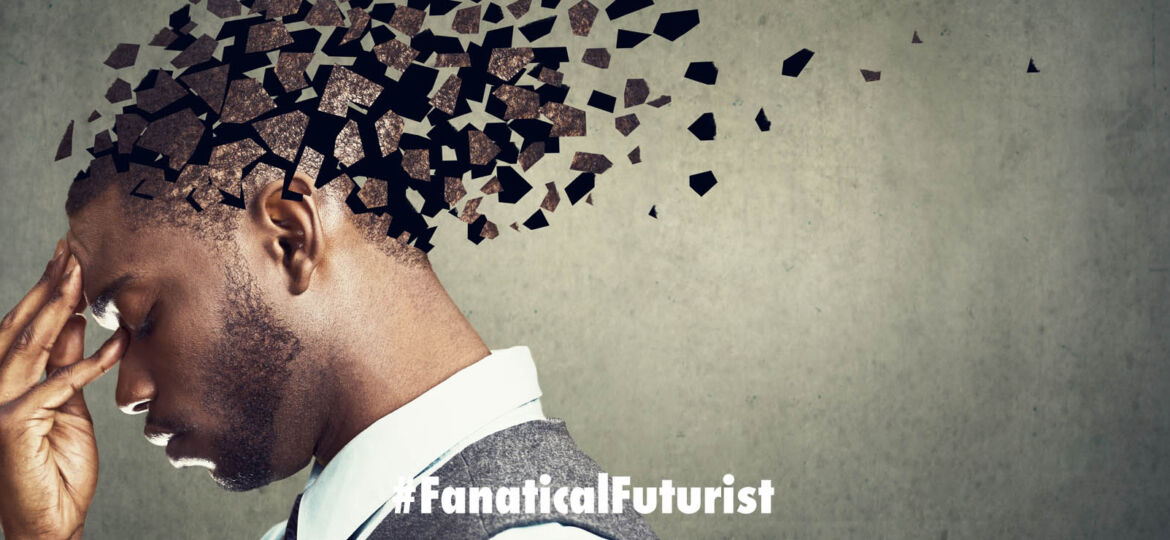
WHY THIS MATTERS IN BRIEF
As we age our memory capacity degrades, but his latest breakthrough turns the clock back over 50 years.
Over the past couple of years I’ve been closely watching the field of Neuro-Training – an emerging technique that helps people with brain training, memory retention, and skills development – as well as other technologies related to downloading, transferring, and uploading information from the human brain, which are definitely worth a read.
In fact neuro-training, even in its uncompromising infancy, seems so effective that it was used by the US Olympic team before the Rio Olympic Games to boost the performance of some of their athletes by up to 80 percent. Similarly, as the technique, and the technologies associated with it improve, and even become integrated with Virtual Reality headsets, and as the results produced by the fusions keep speaking for themselves I can’t help but wonder if these systems will one day find their way into the education sector – something I covered in my recent Future of Education report.
It’s for this reason this particular news story peaked my interest – but I’m also pragmatic enough to know that this is a marathon, and a long one at that, and not a sprint, so it will take time for these systems to become commercial grade and certified as safe for general use. Perhaps in 2035…
Recently scientists found that a decline in memory as a result of ageing can be temporarily reversed using a harmless form of electrical brain stimulation, and their findings help explain why certain cognitive skills decline significantly with age and raise the prospect of new treatments.
“Age-related changes are not unchangeable,” said Robert Reinhart, a neuroscientist at Boston University, who led the work. “We can bring back the superior working memory function that you had when you were much younger.”
The teams study focused on a part of cognition called working memory, the brain system that holds information for short periods while we are making decisions or performing calculations. Working memory is crucial for a wide variety of tasks, such as recognising faces, doing arithmetic and navigating a new environment.
Working memory is known to steadily decline with age, even in the absence of any form of dementia. One factor in this decline is thought to be a disconnection between two brain networks, known as the prefrontal and temporal regions.
In young people, the electrical brain activity in these two regions tends to be rhythmically synchronised, which scientists think allows information to be exchanged between the two brain areas.
However, in older people the activity tends to be less tightly synchronised. This may be as result of deterioration of the long-range nerve connections that link up the different parts of the brain.
In the study, published in the journal Nature Neuroscience, 42 people aged 20 to 29 and 42 people aged 60 to 76 were assessed in a working memory task. As expected the older group were slower and less accurate on the tests.
The scientists then subjected them all to 25 minutes of non-invasive brain stimulation. This aimed to synchronise the two target brain regions by passing gentle pulses of electricity through the scalp and into the brain.
After the intervention, working memory in the older adults improved to match the younger group and the effect appeared to last for 50 minutes after the stimulation. Those who had scored worst to start with showed the largest improvements.
“We’re seeing the largest improvements in people with the greatest deficits at baseline,” said Reinhart. “That really bodes well for clinical work in people with these types of cognitive brain disorders.”
However, Prof Robert Howard, professor of old age psychiatry at University College London, cautioned that the improvements in working memory seen in the tests may come at a cost.
“I would caution against any uncritical assumption that this will translate into clinical benefit,” he said. “The findings need to be replicated under clinical trial conditions, with larger numbers of participants and with robust blinding of subjects and outcome assessors.”
“The real-world benefits of any apparent improvements in experimental working memory function associated with the technique will also need to be evaluated together with the impact of any potential adverse effects of brain stimulation. For example, induced improvements in working memory might come at the price of worsening of other areas of cognitive function,” he added.
Dardo Tomasi, a scientist at the National Institute on Alcohol Abuse and Alcoholism in Bethesda, who was not involved in the work, said: “This is an important finding that can lead to future development of alternative interventions … for dementia.”
While these results were exciting and promising, he said, larger studies would be needed to confirm the findings and assess how they might be applied clinically.
Reinhart said the approach could have significant clinical benefits by improving the performance of working memory in older people. He said it could also have applications in treating disorders linked to poor working memory, such as schizophrenia and Alzheimer’s disease.
Dr James Pickett, the head of research at the Alzheimer’s Society, said: “We can’t cure, prevent or even slow down dementia so it’s vital we explore all possible areas for treatments,” before adding, “Altering and correcting the circuitry of the brain with technology is a new exciting avenue of research for dementia. Deep-brain stimulation, a surgical procedure used in Parkinson’s, is proof of principle that this approach may one day be fruitful for dementia.”
















